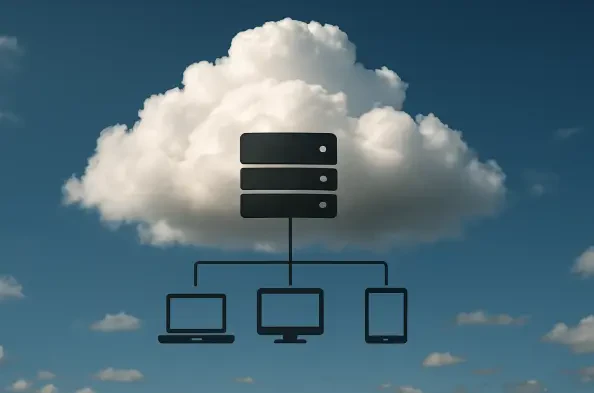In an era where digital infrastructure underpins nearly every facet of business and society, the stability of cloud services has become a linchpin of operational success. Consider a single outage at a major provider like Amazon Web Services (AWS) or Microsoft Azure, capable of halting e-commerce transactions, streaming platforms, and even critical security tools across the globe in mere minutes. Such disruptions, as seen in recent high-profile incidents, reveal a stark reality: the resilience of cloud systems is not just a technical concern but a fundamental business imperative. This review delves into the intricacies of cloud service resilience, exploring its core components, vulnerabilities, real-world impacts, and the innovative strategies shaping its future. The aim is to provide a comprehensive understanding of how resilience can safeguard against cascading failures in an increasingly cloud-dependent landscape.
Understanding Cloud Service Resilience
At its essence, cloud service resilience refers to the capacity of cloud infrastructure to endure disruptions and recover swiftly while ensuring operational continuity and robust security. This capability hinges on key elements such as redundancy, which involves duplicating critical systems to prevent single points of failure; failover mechanisms, which enable seamless switching to backup resources; and recovery protocols, designed to restore normalcy post-disruption. Major providers like AWS and Azure integrate these components to varying degrees, yet their effectiveness is tested as reliance on cloud solutions grows across sectors ranging from finance to healthcare.
The significance of resilience extends beyond mere uptime, embedding itself into the fabric of modern technological ecosystems. With cloud platforms supporting everything from enterprise software to real-time data analytics, any lapse can trigger widespread consequences. This interconnectedness underscores why resilience is a priority, as businesses increasingly stake their operations on the stability of these digital foundations, demanding systems that can adapt and rebound under pressure.
Key Vulnerabilities in Cloud Infrastructure
Dependency on Single Providers
A primary risk in cloud ecosystems stems from an over-reliance on a single provider, creating a vast impact zone when failures occur. When services like AWS’s EC2 or Azure’s Microsoft 365 experience downtime, the effects ripple through interconnected networks, disrupting not only direct clients but also businesses dependent on third-party tools hosted on these platforms. This “blast radius” amplifies the stakes, as even organizations with diversified tech stacks can find themselves indirectly affected by a single vendor’s outage.
Such dependency concentrates risk, leaving little room for immediate alternatives when disruptions strike. Enterprises often lack the agility to pivot to other systems swiftly, especially if their infrastructure is tightly coupled with a specific provider’s architecture. This vulnerability highlights the need for strategic planning to dilute reliance and build buffers against sudden service interruptions that can halt operations across multiple layers of dependency.
Cybersecurity Risks During Downtime
Beyond operational hiccups, cloud outages open dangerous windows for cybersecurity threats, as the rush to restore services often sidelines critical safeguards. IT teams, under pressure to minimize downtime, may bypass standard monitoring or delay essential patches, inadvertently exposing systems to exploitation. This chaotic environment becomes fertile ground for threat actors seeking to capitalize on temporary lapses in defense.
Moreover, emergency measures taken during outages, such as running systems in degraded modes, can strip away standard security controls, creating entry points for attackers. Phishing campaigns also spike in these moments, preying on confused users desperate to regain access to services. These compounded risks illustrate how downtime is not just a technical setback but a potential gateway to broader security breaches if not managed with precision.
Recent Trends and Innovations in Resilience
The landscape of cloud resilience is evolving rapidly, with diversified cloud strategies gaining traction as a countermeasure to single-provider risks. Enterprises are increasingly exploring multi-cloud environments, distributing workloads across platforms to ensure that a failure in one does not cripple the entire operation. This approach, while complex to implement, offers a safety net that is becoming more feasible with advancements in interoperability standards.
Artificial intelligence (AI) is another frontier driving resilience forward, with platforms leveraging machine learning for rapid root cause analysis during outages. These tools can differentiate between technical glitches and cyberattacks, enabling quicker, more coordinated responses. However, enthusiasm for AI is tempered by concerns over automation pitfalls, prompting a balanced approach where human oversight remains integral to decision-making processes.
A notable shift is also seen in automated response systems, which aim to minimize human error by preemptively addressing disruptions. While promising, adoption remains cautious, as businesses weigh the benefits against the risks of over-dependence on algorithms. These innovations collectively signal a proactive turn in resilience strategies, aiming to fortify cloud systems against an unpredictable digital terrain.
Real-World Impacts of Cloud Outages
The tangible consequences of cloud disruptions are vividly illustrated by recent incidents, such as the AWS outage on October 19, which stalled operations for major platforms including Amazon’s retail services and Disney+ streaming. Industries from e-commerce to entertainment faced immediate revenue losses and customer dissatisfaction, as downtime disrupted peak user interactions. These events underscore how integral cloud services are to daily business functions across diverse sectors.
Beyond direct impacts, cascading effects often hit critical tools like security and identity management systems reliant on cloud infrastructure. For instance, when Azure experienced a subsequent disruption, enterprises using Microsoft 365 for core operations encountered delays in threat detection and response, amplifying risks during already vulnerable periods. Such scenarios reveal the hidden dependencies that exacerbate the fallout from outages.
Unique challenges also emerge in specific contexts, such as the strain on customer-facing platforms during high-traffic periods. Retailers, unable to process transactions, and streaming services, losing viewer engagement, face not only financial setbacks but also reputational damage. These real-world examples emphasize that the cost of downtime extends far beyond technical recovery, influencing trust and long-term market positioning.
Challenges in Achieving Cloud Resilience
Building resilient cloud systems is fraught with technical hurdles, particularly in enabling seamless switching between providers during disruptions. Transitioning workloads to an alternative platform often involves compatibility issues and latency, rendering such shifts impractical under crisis conditions. This limitation frustrates efforts to mitigate risks tied to single-vendor dependency, demanding more robust integration frameworks.
Secure backup maintenance presents another obstacle, as ensuring data integrity and accessibility across distributed environments requires significant resources. Many organizations struggle with keeping backups current and protected against cyber threats, especially when budgets or expertise are constrained. This gap in preparedness can delay recovery, prolonging exposure to operational and security risks.
Regulatory and market barriers further complicate resilience efforts, as compliance requirements may restrict multi-cloud adoption in certain industries. Additionally, the cost of diversifying infrastructure deters smaller enterprises from pursuing comprehensive strategies, leaving them disproportionately vulnerable. Addressing these multifaceted challenges necessitates ongoing innovation in contingency planning and rigorous testing to validate recovery mechanisms under real-world stress.
Future Outlook for Cloud Resilience
Looking ahead, multi-cloud architectures are poised to play a pivotal role in enhancing resilience, offering a distributed model that reduces the impact of isolated failures. As interoperability improves over the coming years, businesses can anticipate smoother transitions between platforms, bolstering their ability to maintain continuity. This trend promises to reshape how enterprises structure their digital foundations for maximum stability.
AI’s role in resilience is also expected to expand, with algorithms becoming more adept at predictive maintenance and anomaly detection. Yet, the emphasis on human oversight will likely persist, ensuring that automated systems do not introduce unforeseen errors. Striking this balance will be crucial as reliance on intelligent tools grows in managing complex cloud environments.
Long-term, the focus on resilience is set to redefine business continuity and cybersecurity paradigms across industries. As strategies mature, the integration of advanced recovery protocols and diversified infrastructure could mitigate the severity of disruptions. This evolution aims to create a digital ecosystem where outages are less catastrophic, preserving trust and operational integrity in an interconnected world.
Final Thoughts and Key Takeaways
Reflecting on the exploration of cloud service resilience, it becomes evident that the journey to robust systems demands urgent attention amidst widespread digital dependency. The analysis of vulnerabilities, real-world disruptions, and emerging innovations paints a clear picture of both the challenges and possibilities that define this domain. It is apparent that resilience stands as a cornerstone for safeguarding against the cascading impacts of outages.
Moving forward, enterprises should prioritize actionable steps such as investing in multi-cloud strategies to dilute risk and enhance flexibility. Regular testing of contingency plans, coupled with cautious integration of AI tools for outage management, emerges as practical measures to strengthen defenses. Additionally, fostering a culture of preparedness, where security remains paramount even during chaos, offers a path toward sustainable stability in cloud-dependent operations.






